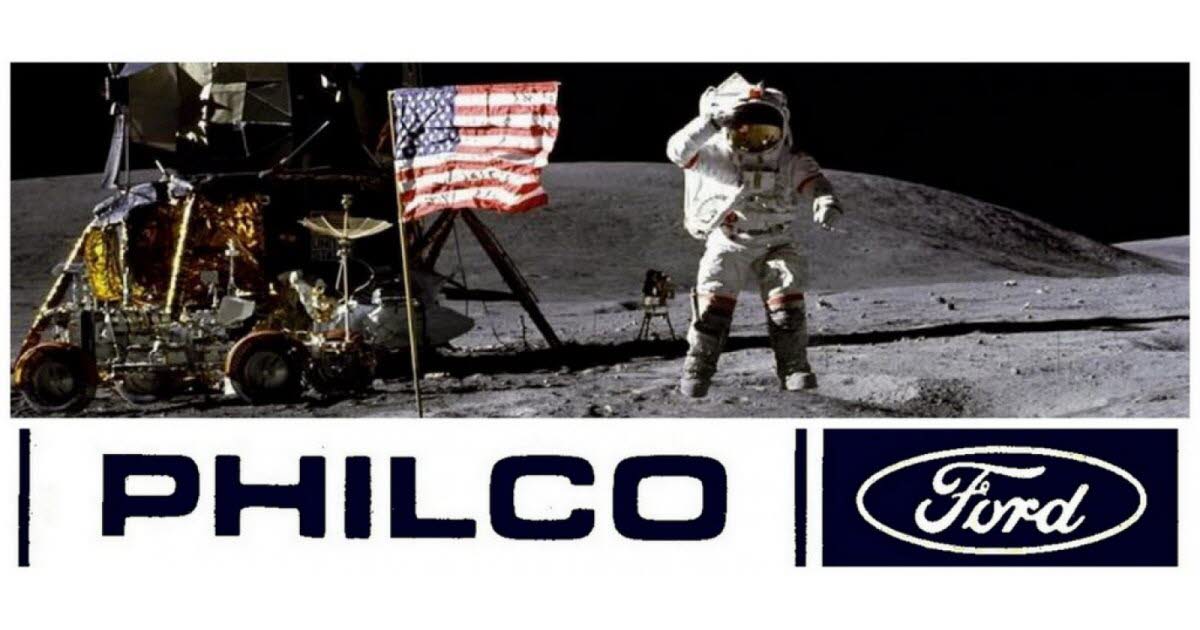The story begins with Philco, which was founded in 1892 to produce lamps before moving into battery, radio and television production. In 1953, Felco engineers invented the surface diaphragm transistor. It is the first high-frequency transistor that then allows the development of “high-speed computers”.
In miniaturizing and perfecting the transistor, Philco began to pique the interest of the US Army and NASA. But Philco’s development is expensive and the company is finding itself short of cash. In 1960, Felco definitely had to find a partner with a strong back to continue to exist.
Huge call for bids
Ford, for its part, is seeking to diversify into becoming less dependent on cars. In Detroit, we are fascinated by the innovative technologies developed at Philco. In 1961, Ford bought Philco, merged it into the Aeronutronic division and combined everything into a new entity called Philco-Ford. The new company has big ambitions. In competition with IBM, RCA, Lockheed, Hughes Aircraft or AT&T Phico-Ford, it has won several contracts with NASA. But the hardest part still has to be done.
Build what hasn’t been built before
The conquest of American space is a huge call for tenders and Ford faces enormous challenges. This includes manufacturing, installing, commissioning, and testing the control center with new hardware and software. Everything NASA needs to land on the moon. By delivering unprecedented computing power, Philco-Ford will make “computer-assisted decision making” possible. For the first time, NASA will be able to rely on computers to calculate the feasibility of certain operations.
In addition to designing and building the control center, Philco-Ford has provided technical and engineer personnel during construction and missions. Each of them talking about changing two million cables! 1,500 checks are performed via telemetry, from astronaut health to flight data. Then the Mission Control Center houses the largest selection of TV switching equipment in the world. With five large IBM 360/75 computers, this small world is controlled from the ground up.
peace message
Apollo 8 will be the first attempt to put a spacecraft into orbit around the Moon, before returning it to Earth. A task that poses serious challenges to employees and equipment suppliers in the Control Center. The main factor is the signal interruption when the craft passes behind the moon. Philco-Ford’s mission is to retrieve the signal when the ship returns to the “right side of the moon.” Using this technology, astronauts would be able to broadcast a message of peace on Christmas Eve 1968.
On the way to the moon
In July 1969 the moment of truth came. Apollo 11 is the center of attention. The whole world is holding its breath. The descent of Neil Armstrong and Buzz Aldrin is broadcast worldwide. The astronauts perform a series of experiments. To do this, they are publishing the Apollo Early Science Experiments Package (EASEP). This machine developed by Philco-Ford is responsible for making a series of seismic, weather and light readings. But we will remember that Philco-Ford’s technology will make it possible to broadcast the voice of astronauts and this famous phrase: “This is one small step for man, one giant leap for mankind.” (It’s a small step for a human being, but a big step for humanity.)
A Vision for Navigation by Henry Ford II
In 1980, Ford refocused on automobiles and sold its subsidiary. There is still another historical achievement and vision for “mobility”, explained by Henry Ford II: “Only a few generations ago, most men lived and died hundreds of kilometers from their place of birth. Now our horizon is practically unlimited. If man could walk on the moon, he could He looks at the planets and beyond the solar system like Christopher Columbus had to look through a threatening ocean…If we showed the same determination and will by allocating our resources, we could control our cities just as we mastered the challenge of space.”

“Certified gamer. Problem solver. Internet enthusiast. Twitter scholar. Infuriatingly humble alcohol geek. Tv guru.”





